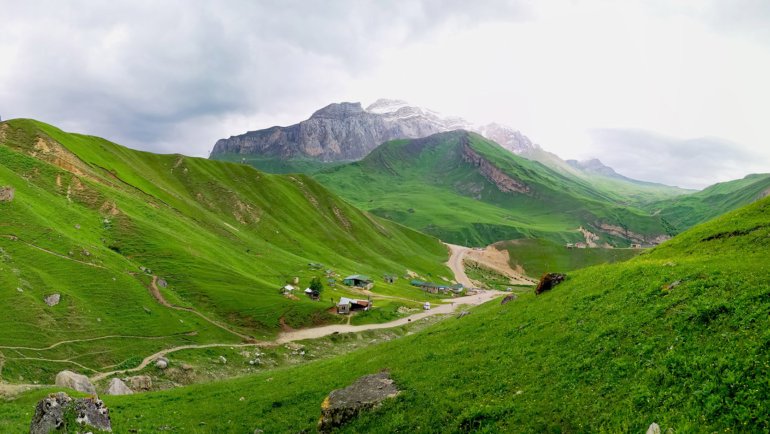Known for its rich biodiversity, fascinating landscapes, and great ecosystems, Bhutan is a small landlocked country located on the southern slopes of the Eastern Himalayas and bordered by China to the north and Indian states of Assam, Bengal, and Sikkim to the west, south, and east respectively.
The unique topography and favorable climate of Bhutan create diverse habitats that range from tropical lowlands and hardwood forests to terrains, pine forests, and alpine meadows. These habitats support a variety of wildlife, from magnificent mammals to reptiles and birds.
In this article, we will explore ten of the fascinating wild animals found in Bhutan.
1. Takin
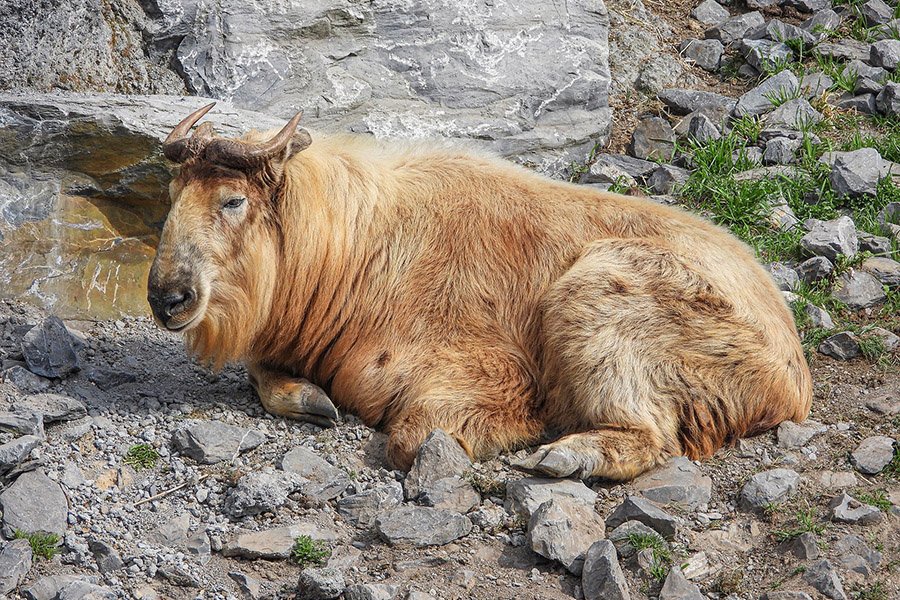
- Scientific name: Budorcus taxicolor
- Type of animal: Mammal
- Where found in the country: Thrumshingla National Park.
- Conservation status: Vulnerable
The takin, also known as the cattle chamois, is a fascinating and distinctively unique animal found in Bhutan. It’s a large, stocky mammal with a shaggy coat of brown fur, a large body, short legs, and curved horns that give it an impressive appearance.
They are primarily found in alpine meadows and high-altitude forest habitats in Bhutan, where they graze and browse on grasses, leaves, and bamboo shoots.
The takin is the national animal of Bhutan. It holds great cultural significance and is revered as the national animal. It’s celebrated for its unique features and its association with the country’s natural landscape. The takin symbolizes strength, resilience, and adaptability, all traits the Bhutanese people aspire to embody.
★ Did you know? The takin’s digestive system is indeed remarkable and is adapted to the unique diet that it consumes. In addition to grasses, leaves, and bamboo shoots, takins feed on unusual items such as bones and bark, which contain important nutrients not found in their primary diet.
2. Clouded Leopard
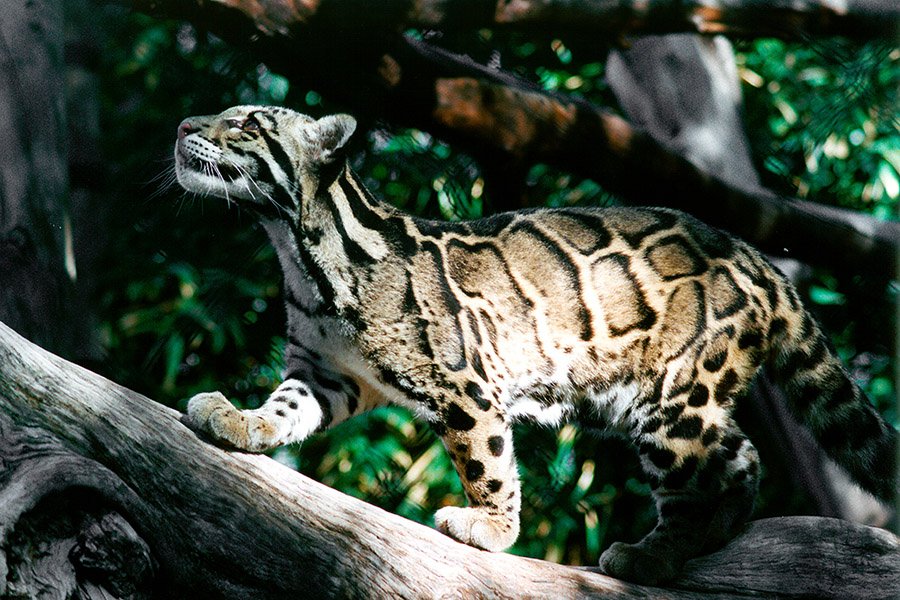
- Scientific name: Neofelis nebulosa
- Type of animal: Mammal
- Where found in the country: Southern foothills and lowlands. It is also known to inhabit the country’s temperate forests and mountainous regions.
- Conservation status: Vulnerable
The clouded leopard is a fascinating and elusive wild cat that roams the dense forests of Bhutan. This species is instantly recognizable due to its distinctive markings, which consist of dusky-grey spots and cloud-like blotches on its fur.
The clouded leopard has a long, bushy tail that measures about 61 to 91 cm (24 to 35 inches). It uses the tail maintain its balance while moving through the trees.
As a highly skilled arboreal predator, the clouded leopard spends most of its day sleeping in the trees and hunting at night. Its diet mainly consists of herbivorous mammals and terrestrial and arboreal vertebrates. The clouded leopard is an ambush predator that stalks its prey with great stealth and skill. It has the ability to climb down trees headfirst, which gives it a unique advantage in catching its prey.
★ Did you know? The clouded leopard has long canine teeth that can grow up to 2 inches long, this tooth enables them to capture and kill their prey.
3. Bengal Tiger
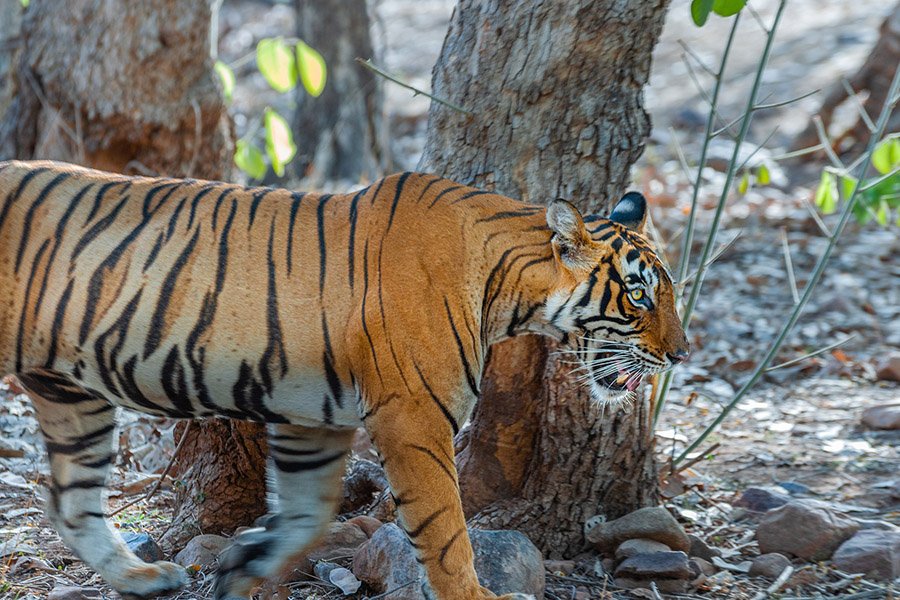
- Scientific name: Panthera tigris tigris
- Type of animal: Mammal
- Where found in the country: The southern foothills and lowlands of the country.
- Conservation status: Endangered
The Bengal tiger is a magnificent and iconic subspecies of tiger that can be found in Bhutan, India, Bangladesh, Nepal, and southwestern China. It is the most numerous of all tiger subspecies, but sadly, its population has been significantly depleted due to habitat loss, poaching, and other human activities.
The Bengal tiger is easily recognizable by its striking yellow-to-orange fur with dark brown-to-black stripes. These markings are unique to each individual and serve as a form of camouflage in their forest habitat. In Bhutan, they primarily inhabit temperate and subtropical forests, hunting for prey and raising their young.
★ Did you know? The female Bengal tiger known as the Champawat tiger holds the notorious record for being the deadliest tiger in history, having killed an astounding 436 people in Nepal and the Kumaon region of India between 1900 and 1907.
4. Golden Langur
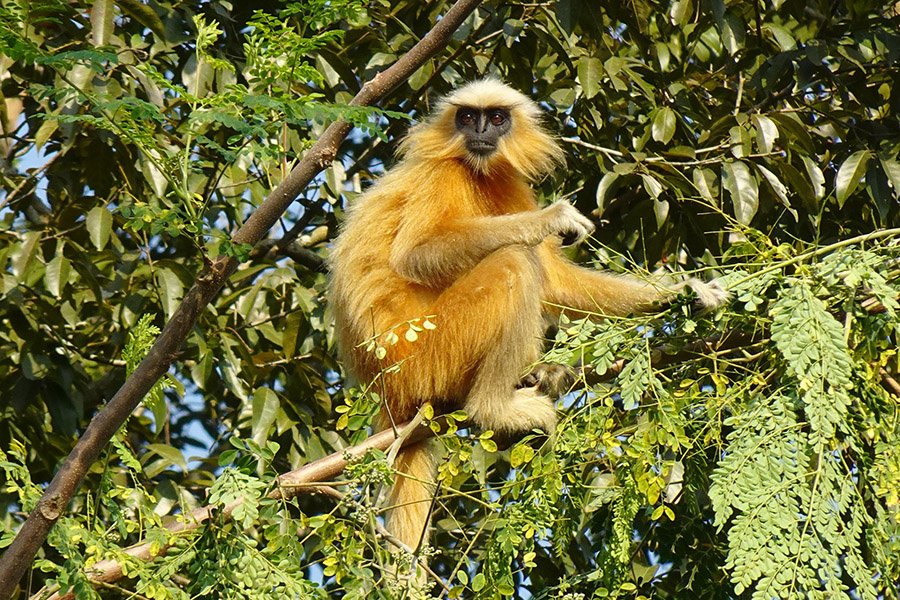
- Scientific name: Trachypithecus geei
- Type of animal: Mammal
- Where found in the country: Districts of Sarpang, Samtse, Trashigang, and Zhemgang.
- Conservation status: Endangered
The golden langur is a fascinating and adorable primate species that is native to the subtropical and tropical forests of Assam in India and Bhutan’s southern region.
This unique and rare species is easily recognizable by its striking golden-like fur, which contrasts sharply with its dark flanks, face masks, and long tails. The golden langur’s physical characteristics enable it to move with ease and agility through trees and other forested areas, where it spends most of its time.
These social animals are known to live in groups of up to eight individuals, with a dominant male as the leader.
★ Did you know? The golden langur has strong and unique vocals; they make high-pitched noises that sound like a combination of a bird squeak and a whistle.
5. Red Panda
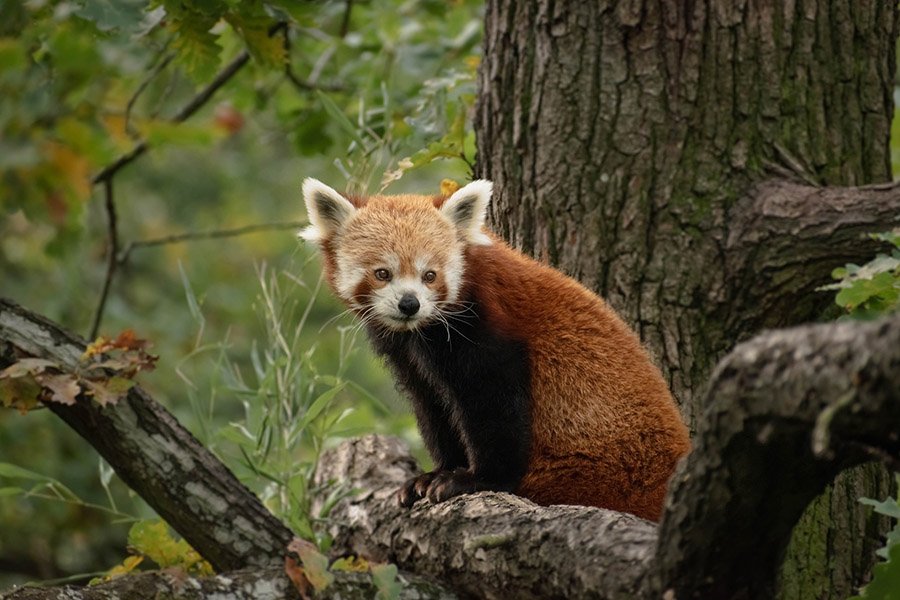
- Scientific name: Ailurus fulgens
- Type of animal: Mammal
- Where found in the country: Bhutan’s temperate forests, particularly in the districts of Bumthang, Sakteng, and Trashiyangtse in the eastern part of the country.
- Conservation status: Endangered
The red panda is a fascinating and elusive creature that inhabits temperate mixed and broad-leaved forests in Bhutan’s eastern region.
One of the most distinctive features of the red panda is its striking reddish fur, which contrasts with its black legs and underneath and bushy tail. These unique physical characteristics, along with their curved claws and flexible joints, allow them to move freely through the forest canopy, where they spend most of their time.
Red pandas are primarily herbivorous and feed mainly on fruits, leaves, and bamboo shoots. They are solitary animals and are most active early in the morning and late in the evening, although they can sometimes be spotted in pairs during the mating season.
★ Did you know? The red panda’s thick fur enables them to survive in cold temperatures, they are known to survive in natural habitats with temperatures as low as -17 degree celsius.
6. Himalayan Black Bear
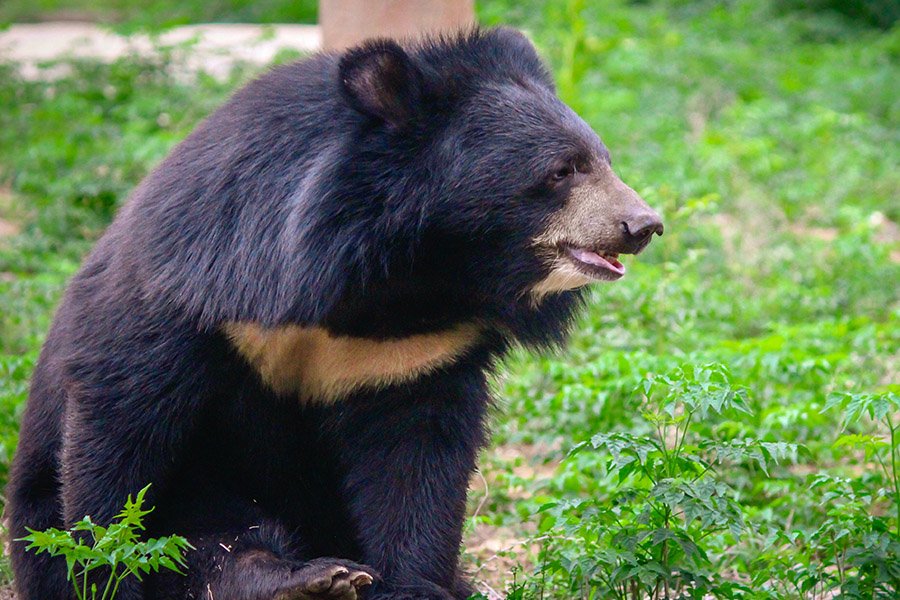
- Scientific name: Ursus thibetanus
- Type of animal: Mammal
- Where found in the country: Jigme Dorji National Park and Wangchuck Centennial Park.
- Conservation status: Vulnerable
The Himalayan black bear, also known as the Asiatic bear, is a large and impressive mammal that is native to the Himalayan region of Asia. These bears are found in several countries, including Nepal, Bhutan, China, India, and Pakistan. In Bhutan, they are typically found in alpine meadows and high-altitude tropical forests, where they forage for food and seek shelter.
The Himalayan black bear is known for its distinctive black fur, which is thick and shaggy and is often characterized by white chest markings. They are powerful and muscular animals, with broad shoulders, strong legs, and sharp claws that are well-suited for climbing trees and foraging for food.
These bears are omnivorous and have a varied diet, including various plants, fruits, insects, and small mammals. They may also prey on domestic animals such as sheep and goats when food is scarce. Due to their large size and strength, they have few natural predators in the wild, except for humans.
★ Did you know? The Himalayan black bear has strong claws, which they use to create dens and dig up food.
7. Gaur

- Scientific name: Bos gaurus
- Type of animal: Mammal
- Where found in the country: Royal Manas Park and Phibsoo Wildlife Sanctuary.
- Conservation status: Vulnerable
The gaur, also known as the Indian bison, is the largest bovine species that is native to South and Southeast Asia. In Bhutan, they can be found inhabiting tropical and subtropical forests.
These majestic animals are known for their impressive size and strength, as they can weigh up to 2200 pounds and stand up to six feet tall at the shoulder. They have distinctive dark-brown coats that appear almost black and have large ears and curved horns that can be up to four feet long.
Gaurs are social creatures that live in herds of up to 30 individuals, with a dominant male serving as the group’s leader. These herds are usually made up of females and their young, along with one or two adult males. When males reach sexual maturity, they typically leave their natal herd and seek out other groups to join or attempt to establish their own.
★ Did you know? The gaur has few natural predators, as they are one of the largest and most powerful animals in their habitat. Crocodiles and tigers mostly attack younger and weaker animals.
8. Asian Elephant
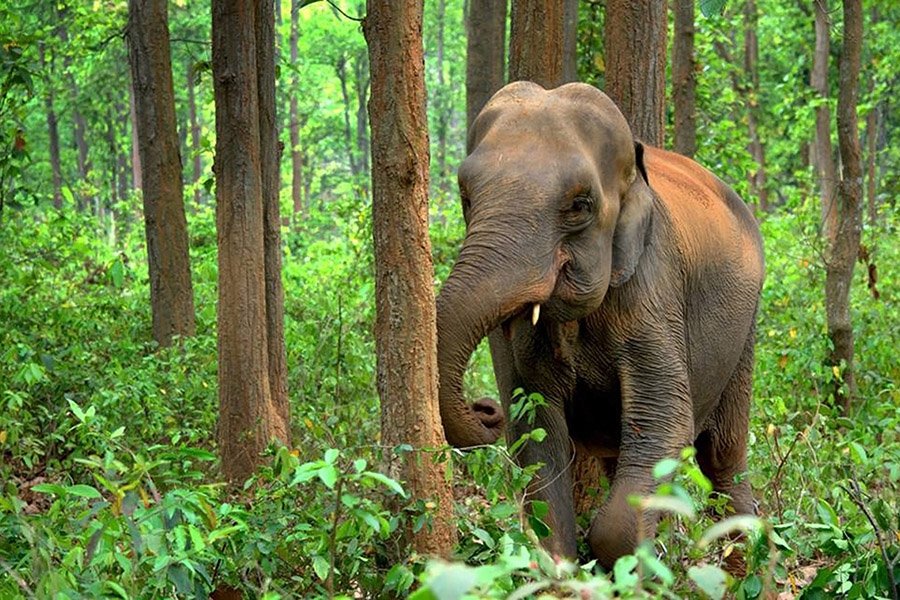
- Scientific name: Elephas maximus
- Type of animal: Mammal
- Where found in the country: Royal Manas National Park, Jigme Singye Wangchuck National Park, and the Phibsoo Wildlife Sanctuary.
- Conservation status: Endangered
The Asian elephant is a majestic mammal that captivates the attention of people worldwide with its enormous size, elongated trunk, and distinctive tusks that serve as a protective tool for its trunk.
These magnificent creatures are predominantly found inhabiting tropical forests, sub-tropical forests, and scrublands across the Asian continent.
★ Did you know? Asian elephant holds a significant place in Bhutan’s cultural practices and religion. Bhutanese people deeply revere these majestic creatures, viewing them as symbols of strength, wisdom, and good fortune.
9. Indian Rhinoceros
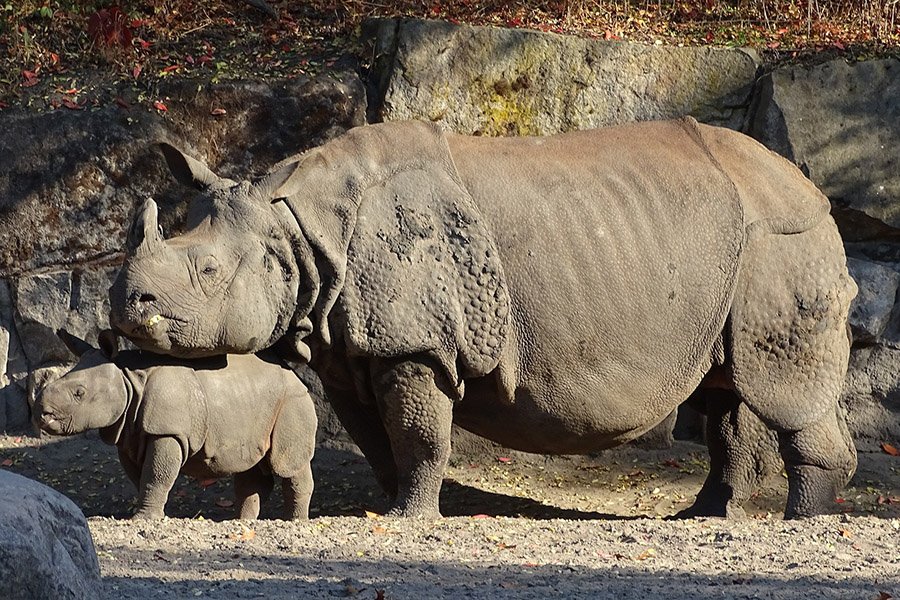
- Scientific name: Rhinoceros unicornis
- Type of animal: Mammal
- Where found in the country: Wangchuck and Royal Manas National Parks.
- Conservation status: Vulnerable
The Indian rhinoceros, also known as the greater one-horned rhinoceros, is one of the largest rhinoceros species on earth and is native to the Indian subcontinent, with a small population residing in the southern region of Bhutan.
These magnificent animals typically inhabit swampy areas and grasslands, with their thick gray-brown skin covered in folds and a single horn on their snouts, making them easily recognizable. They are social animals and live in groups.
★ Did you know? The Indian rhinoceros is an animal with remarkable sensory abilities. In addition to their excellent eyesight, they possess strong hearing and smelling senses that they use to detect threats and predators in their environment.
10. Mainland Serow
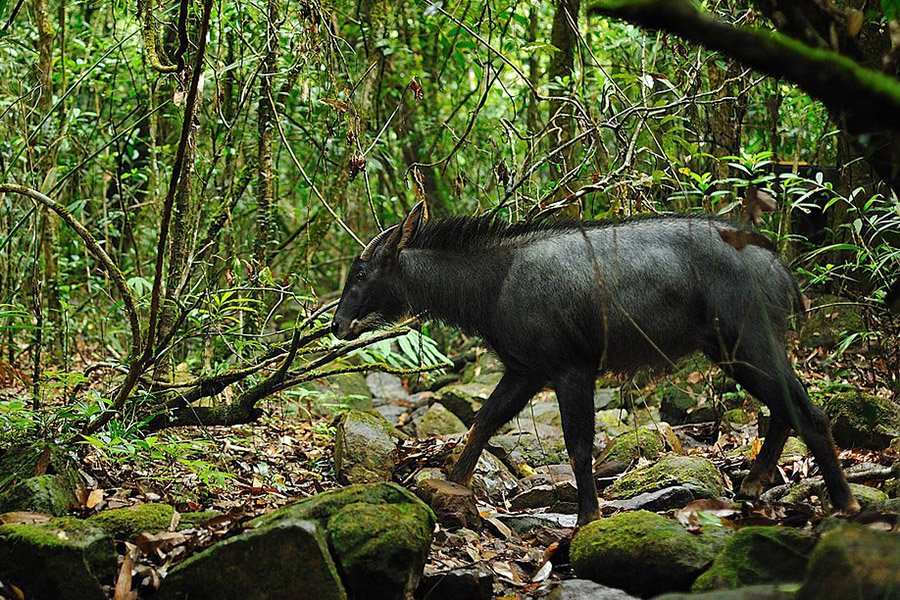
- Scientific name: Capricornis sumatraensis
- Type of animal: Mammal
- Where found in the country: Bumdeling Wildlife Sanctuary and Jigme Dorji National Park.
- Conservation status: Vulnerable
The serow, a goat-antelope-like mammal, is a fascinating creature that inhabits dense tropical and sub-tropical forests, mountainous areas, and alpine meadows. With its shaggy grey hair and small twisted horns that are smaller than its ears, the serow has a distinctive appearance that sets it apart from other animals.
Despite its striking appearance, the serow is a shy and solitary animal that is rarely seen in the wild. It is well adapted to its forest habitat, with keen senses that help it avoid predators and navigate through the dense undergrowth. Its small horns, and nimble hooves allow it to easily climb steep and rocky terrain, making it a master of its environment.
★ Did you know? The serow has a distinctive scent that is used for a variety of purposes. One of the most important uses of this scent is to attract mates during the breeding season and to establish their territory.




